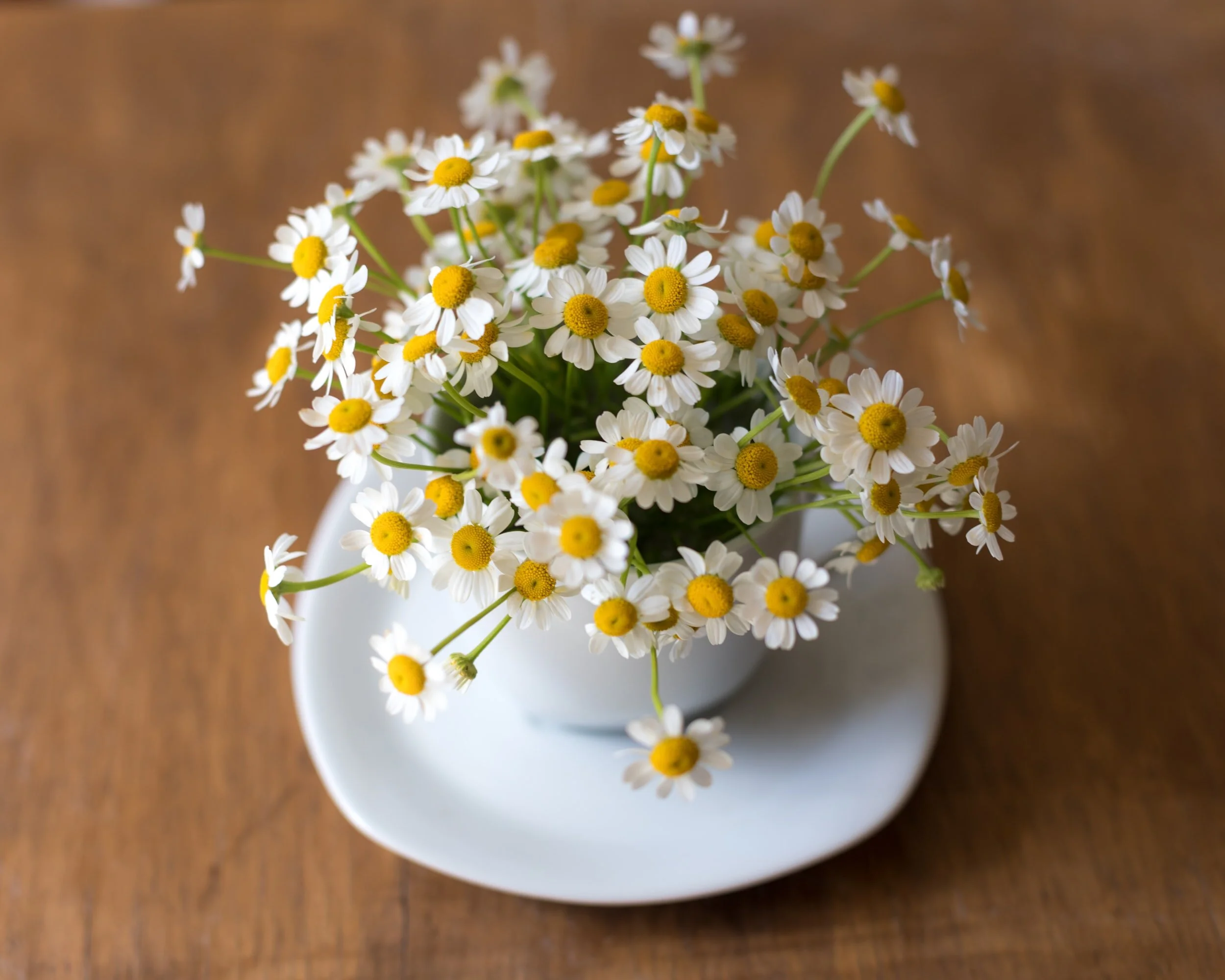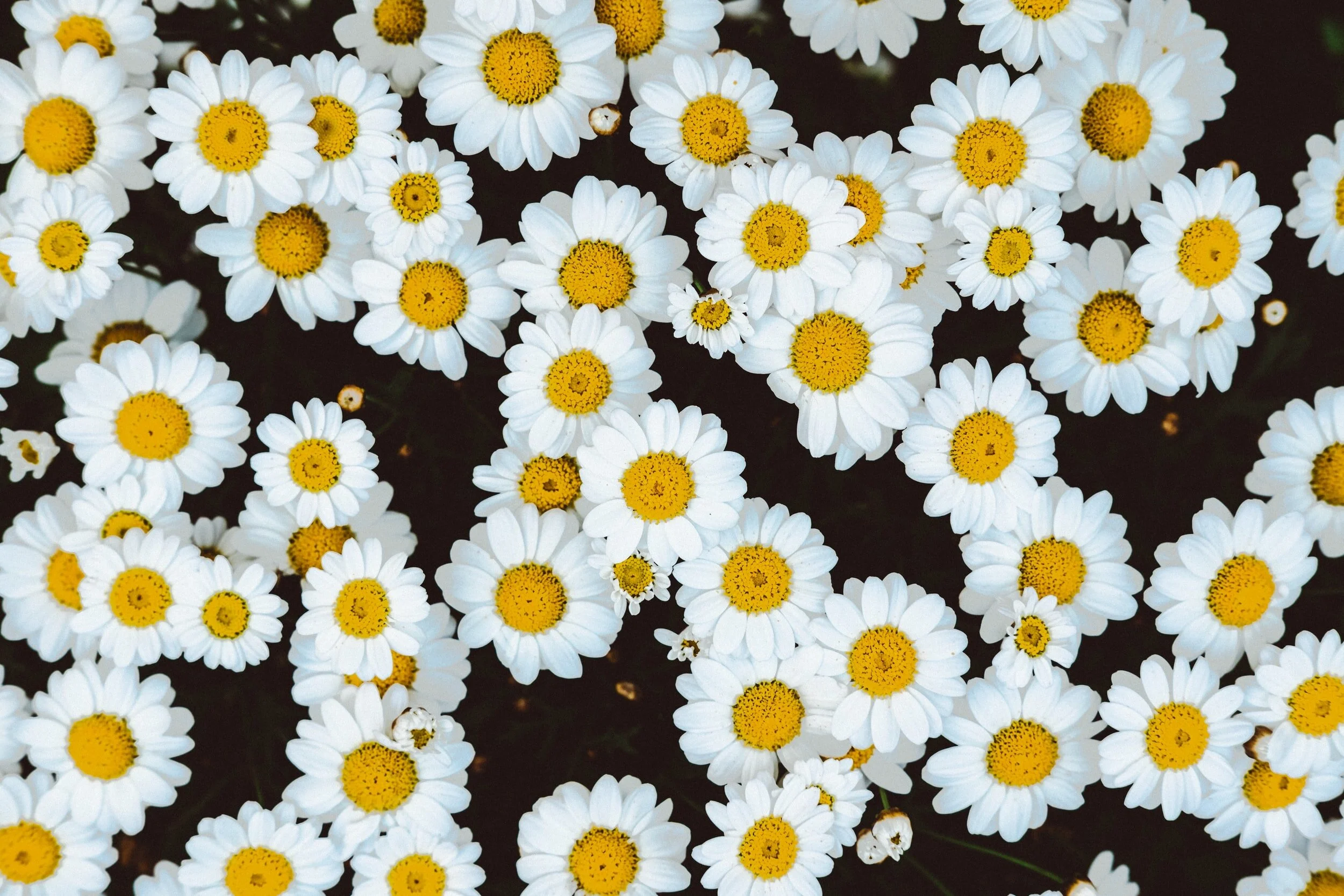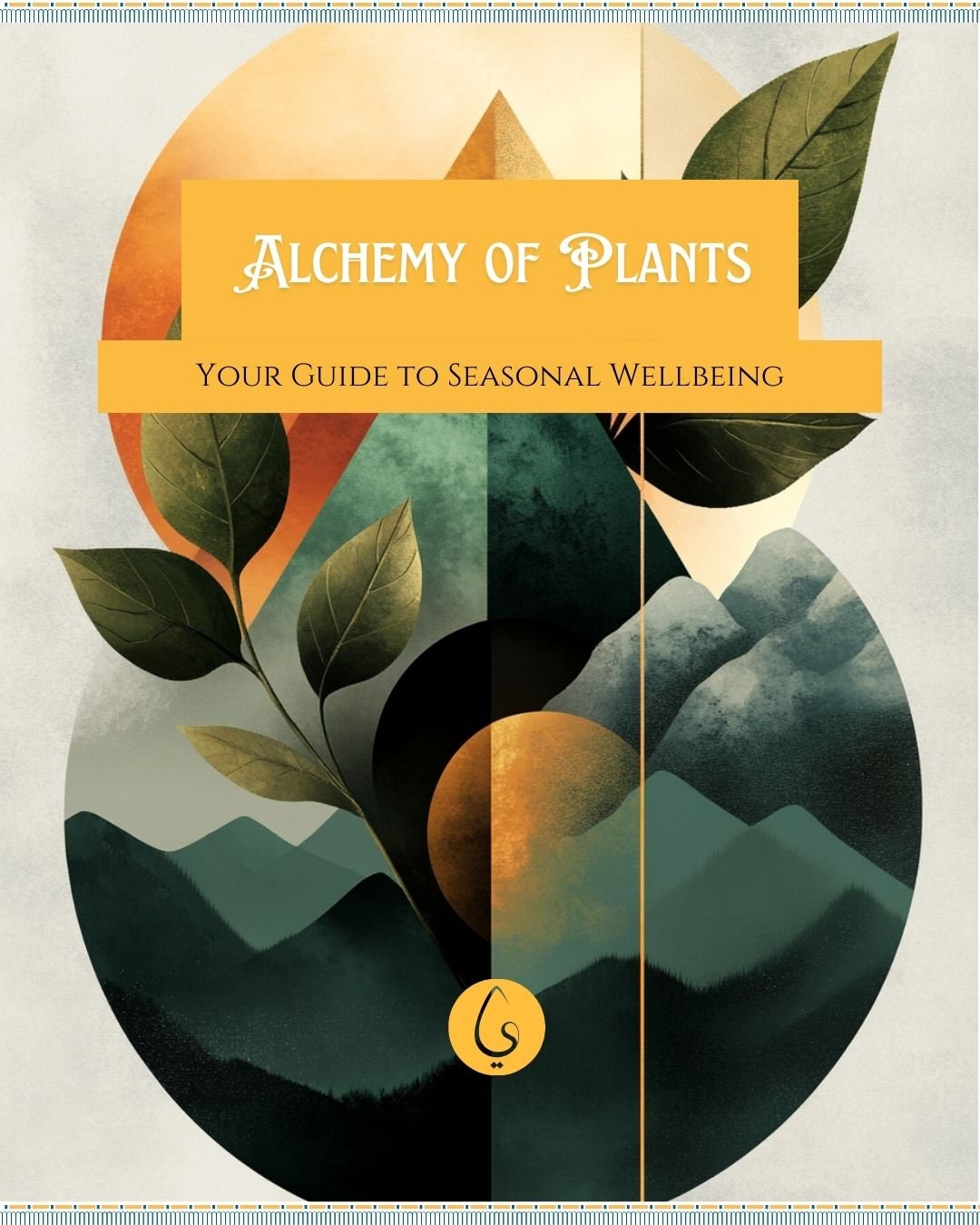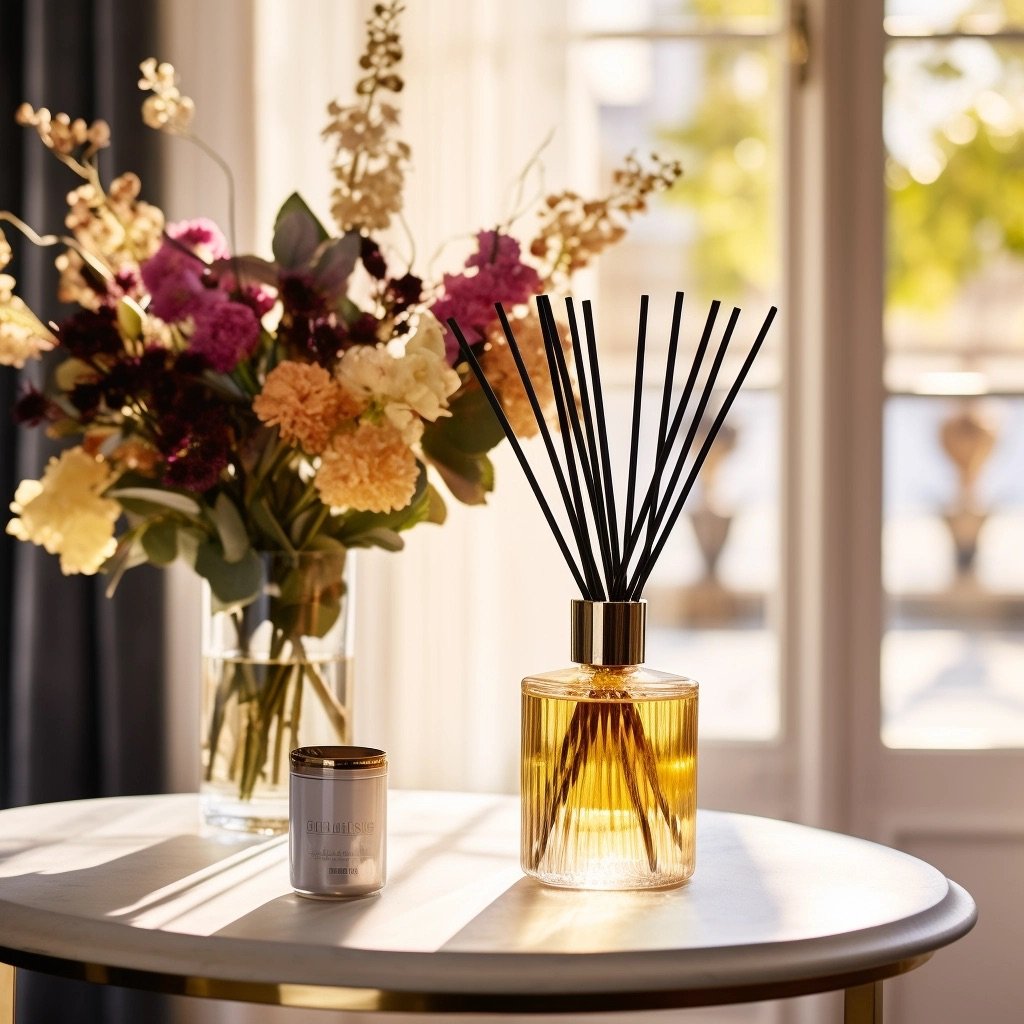Roman Chamomile Essential Oil
Chamomile
Chamaemelum nobile, Anthemis nobilis
Latin Name: Chamaemelum nobile, Anthemis nobilis
Chemistry: Isoamyl angelate, Iso-butyl angelate, 3-Methylbutyl angelate
Aroma: Sweet, Herbal
Good for: Relaxation, Anti inflammation, Allergies
Energetics: Calming, soothing, comforting
Sustainability & Conservation Status: Least Concern
Traditional use: Used since ancient Egyptian times for alignments connected to the nervous system and fever. It was dedicated to the god RA, as a symbol of the sun disk.Tea from the chamomile flowers is still consumed today as part of night time or relaxation brews. It was also a popular herb in medieval times and was used for a variety of ailments, including digestive issues, skin irritations, and menstrual cramps. Today, Roman Chamomile essential oil is commonly used in aromatherapy and natural medicine.
Roman Chamomile, also known as English, True or Common chamomile has a chemical composition that makes it very diverse in its uses and a great addition to any aromatherapy blend. It also has a scent that is quite strong but found by most to be very pleasant it mixes beautifully with other oils. Since it is a much more expensive oil to produce and use, it is a good thing that a little goes a long way. The chemistry of it is high in Esters which is usually associated with sedation, relaxation and anti inflammation. It is related to German Chamomile, and even though the chamazulene content of it is not as high, it still performs well as an anti inflammatory (1) and anti allergy agent when blended in a synergy. It is a great oil to use for inhalation or diffusion to quieten the mind and unravel stress (3).
Some its proven properties include:
Anti-inflammatory properties: Roman Chamomile essential oil has been shown to have anti-inflammatory properties. A 2010 study published in the Journal of Agricultural and Food Chemistry found that Roman Chamomile essential oil significantly inhibited the production of pro-inflammatory cytokines in human skin cells.
Calming and relaxing effects: Roman Chamomile essential oil is known for its calming and relaxing effects. A 2018 study published in the journal Evidence-Based Complementary and Alternative Medicine found that inhaling Roman Chamomile essential oil reduced anxiety levels in patients undergoing cataract surgery.
Sleep aid: Roman Chamomile essential oil has been traditionally used as a sleep aid. A 2017 study published in the journal Complementary Therapies in Clinical Practice found that using Roman Chamomile essential oil in aromatherapy improved sleep quality in postpartum women.
Skincare: Roman Chamomile essential oil has been traditionally used in skin care products for its anti-inflammatory and soothing properties. A 2019 study published in the journal Molecules found that Roman Chamomile essential oil had significant antioxidant and anti-inflammatory effects on human skin cells.
Roman chamomile vs German chamomile
Even though they are similar in looks and sometimes sold interchangeably, they are actually two different plants.
Both chamomiles have a lot of similarities, but their chemistry can differ in concentration of its constituents making their therapeutic uses different when choosing for aromatherapy blends.
Botanical differences: Roman Chamomile (Chamaemelum nobile) is a small perennial plant with white daisy-like flowers and feathery leaves. At the same time, German Chamomile (Matricaria chamomilla) is an annual plant with yellow-centred white flowers and fern-like leaves.
Aroma differences: Roman Chamomile essential oil has a sweet, fruity aroma with a hint of apple, while German Chamomile essential oil has a strong, herbaceous aroma with a bitter undertone.
Chemical differences: Roman Chamomile essential oil contains higher levels of esters such as angelate and tiglate, which give it its calming properties, while German Chamomile essential oil contains higher levels of azulenes, which give it its anti-inflammatory and analgesic properties.
Uses: Roman Chamomile essential oil is often used in aromatherapy to promote relaxation and improve sleep, while German Chamomile essential oil is often used topically to soothe skin irritations, reduce inflammation, and ease muscle pain.
-
Do not consume essential oils internally.
Do not use essential oils undiluted.
Seek medical advice or advice from a qualified aromatherapist if you are on prescribed medication or suffer from any long-term illness.
Consult with a qualified aromatherapist before using essential oils with children or the elderly.
REFERENCE





